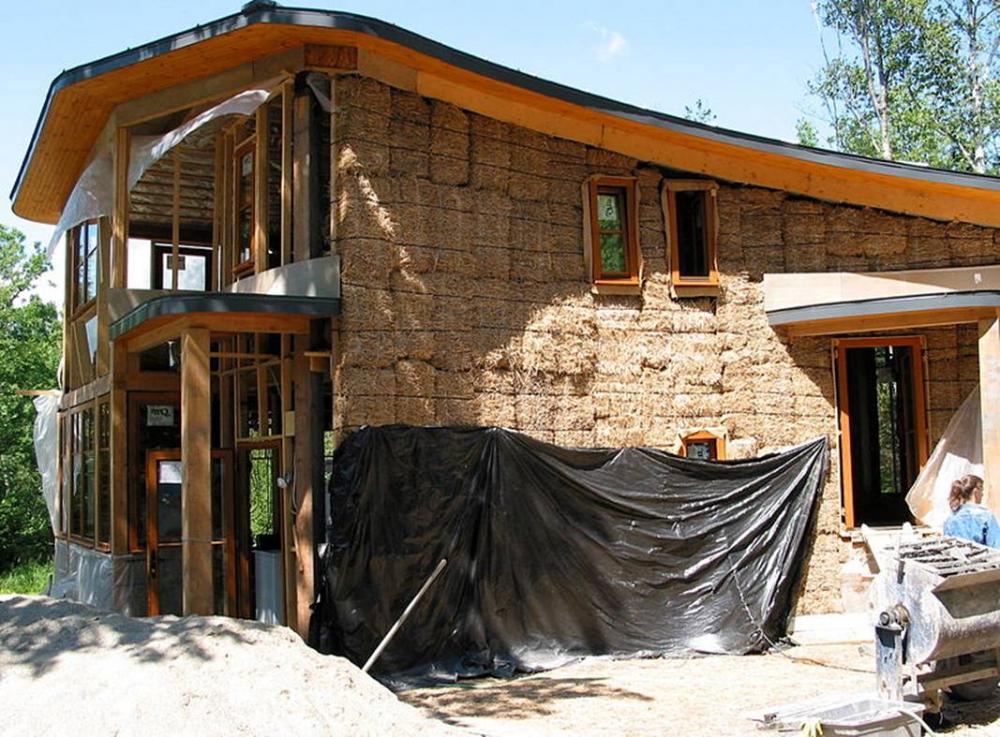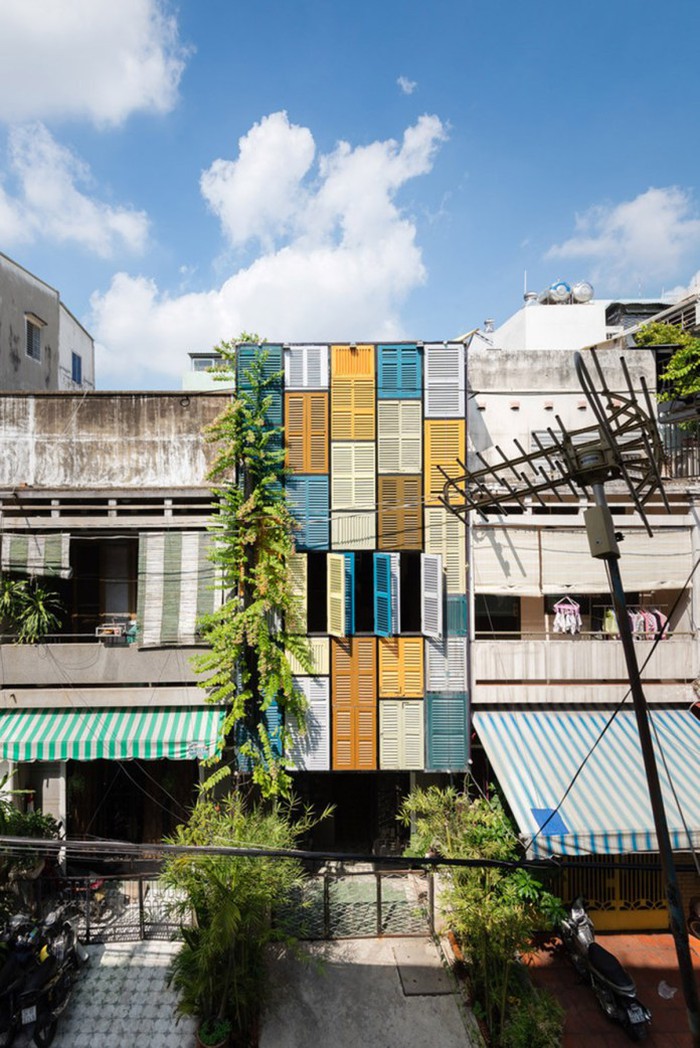15 Green Materials in the trend of sustainable construction
Sustainable construction trends encourage the use of green, environmentally friendly materials and energy-saving solutions to minimize the impact on the environment while ensuring functionality, aesthetics and efficiency. economics of the project.
Using unburnt bricks is an inevitable trend of the world.
Green building (sustainable building) is an inevitable trend in countries around the world. In particular, in Vietnam, which is on the top list in terms of exposure to climate change risks in the next 30 years, the development of green buildings needs to be focused and promoted. To achieve that, construction products need to focus on and prioritize the use of green and environmentally friendly materials.
Green materials are defined as materials that are environmentally responsible because their effects are considered throughout the life of the material. According to the definition of Green Guide, green building products and materials must satisfy at least one of the following criteria:
– Non-toxic
– Has a recycled content
– Saving resources
– Long life cycle
– Care about the environment
We would like to introduce to you the green material products that are highly appreciated in the market for their efficiency and cost-effectiveness.
Materials derived from soil
Earth-based materials such as unburnt bricks, a mixture of clay mixed with corn cob and lime, and rammed earth have been used for construction purposes since its inception. To increase the bearing capacity and durability of the material, people can add grass, straw or other chopped fibers. Buildings made from these materials have very high thermal insulation capacity and are cost-competitive.
Bamboo
Bamboo is a traditional material used in construction works in many localities for thousands of years. Today, along with the trend of developing green buildings, bamboo is really a promising construction material for modern buildings in the world. This type of material has the advantages of strength, weight and rapid regeneration. Bamboo can be used as a framework for buildings, replacing the role of reinforced concrete, especially in areas with abundant bamboo resources, difficult traffic, and needing reconstruction after natural disasters.
XPs Styrofoam
For a long time, XPs foam sheet is a sound and heat insulation material used in many civil, industrial and public constructions. Many recent studies on new construction buildings show that those using foam insulation panels with a thickness of 15-18cm have the ability to save electricity consumption from 343-344Wh/m2.
Lightweight concrete
Lightweight concrete weighs only ½ of baked clay bricks, helping to save on foundation costs. With a structure with high porosity, lightweight concrete has good insulation, helping to reduce about 30% of electricity used for air conditioning. In addition, lightweight concrete also has high sound insulation, fire resistance for about 4 hours. Using lightweight concrete also helps to reduce the cost of plastering because the concrete surface is flat.
Although the cost is about 10-15% higher than ordinary bricks, in return, lightweight concrete helps to reduce the cost of foundation, plastering, electricity and is also a recommended green material because of the production process. less emissions.
VOC-free paint
The term VOC (volatile organic compounds) usually refers to a mixture of toxic organic substances that are airborne. VOC exists in most interior and exterior paints, coatings, adhesives, cleaning products… VOCs are very volatile and combine with harmless inorganic substances to form new compounds that pollute the environment and cause harm to the environment. affects human health such as eye and nose irritation, headache, dizziness, respiratory diseases, lung and nervous system damage.
Therefore, when choosing wall paint, you should pay attention to the VOC index of the paint. Low-VOC paints are usually more expensive but are safer. To ensure the health of yourself and your family, you should choose paint that does not contain VOCs (0g/liter) or has a VOC content of less than 50g/liter.
bales of straw
Straw bales are green materials that are used a lot in farms because of their availability and high sound and heat insulation. In addition, the straw bales are also fireproof because when produced, the straw is pressed tightly so air cannot pass through. Because straw bales have no bearing capacity, they are only suitable as filling materials between columns or in frames and beams.

The insulation ability of straw bales is not inferior to plaster or plaster.
Sandbag
Construction technology using soil and sand bags (earthbag) is being highly appreciated by experts thanks to its low cost, fast completion time, and still ensures solidity and solidity for the project. This trend originates from African countries such as Zimbabwe, South Africa, Mozambique, Madagascar, Namibia.
The way to build a sandbag house is very simple, the sandbags are stacked on top of each other and fixed with steel wire so as not to slide down. In some countries, such as Colombia, in addition to the main material is sand, people also mix some substances such as lime, cement, clay, and put a layer of live brick or plaster on the outside to protect the building from external influences. This structure can even withstand earthquakes.
Slate (slate)
Split stone is a natural stone, split from a large block of rock. Thanks to that, the stone has a uniform color, easy to tile. With the characteristics of high temperature resistance, good coldness; bearing capacity, many colors, natural stone veins, split stone give the building eternal durability and delicate beauty. Besides, split stone is produced by unburnt technology, so it has less impact on the environment, and the cost is also lower than many other paving materials.
However, due to its very heavy weight and difficult construction, this material is mainly used near mining areas, mainly works close to a distance of no more than 100km.
Eco-roof corrugated iron
Eco-roofing is produced from organic fibers of cellulose, acrylic and asphalt waterproofing by layer pressing method. Thanks to that, the roofing sheet has the ability to withstand harsh weather, not corrode in the salt environment, so it is very suitable for coastal works. This type of roofing sheet has heat resistance, sound insulation and electrical insulation to help save electricity for air conditioning on days when the temperature is high.
PVC/ASA synthetic roof
Roof sheets made of synthetic materials such as foam insulation or cellulose sandwiched between two metal or two plastic sheets are listed as green, environmentally friendly materials. This type of material is quite light, affordable and has very good thermal insulation for the structure, thereby helping to reduce electricity consumption.
PU . Cold Insulation Material
PU (PolyUrethane) insulation board has perfect insulation, moisture resistance, good fire resistance, no aging, bearing capacity and high durability. In construction, PU insulation panels are used to make prefabricated houses, prefab houses, hospitals, schools…
SIPs . Insulation Panel
The main components that make up SIPs are foam and fiberboard (OSB). This type of material takes less material and energy to manufacture than other structural systems. Not only good insulation, SIPS insulation panels also help architects achieve LEED Platinum energy certification and Passive House standards.
Natural fiber
Natural fibers such as cotton and wool are also popular insulation materials for buildings. Fabrics of cotton or wool are pressed into sheets and installed on wooden walls or frames.
Glass fiber
Fiberglass is also used for insulation purposes in the form of glass panels. Although fiberglass contains some toxic ingredients, thanks to its super-insulating properties and low cost, it is still considered a green building material.
Recycled building materials
The use of recycled building materials has the effect of reducing the need for new materials, reducing production costs, transportation costs, waste treatment costs, etc.

Wooden windows from the old building make an impressive appearance for the new house.
You can make use of recycled materials according to the suggestions below to save costs and still ensure the quality of the work:
– Brick: Use healthy bricks for retaining walls and auxiliary works; broken bricks as foundations, walkways.
– Concrete: Shredded concrete after demolition can be used to make house floors, leveling works or as raw materials to produce unburnt bricks.
– Metal: The most reused construction waste is steel. The material is almost completely recyclable, allowing for repeated recycling.
– Wood: Recycled wood is used from warehouses, old houses, wine barrels, cargo boxes. Excess wood from construction and demolition works can be reused for other construction projects after cleaning.
Plastic: Plastic waste is best recyclable when it is collected separately, not mixed with other waste. The cleaned plastic waste can be reused in specially designed products such as cable ducts, PVC windows, roofs or floors.







